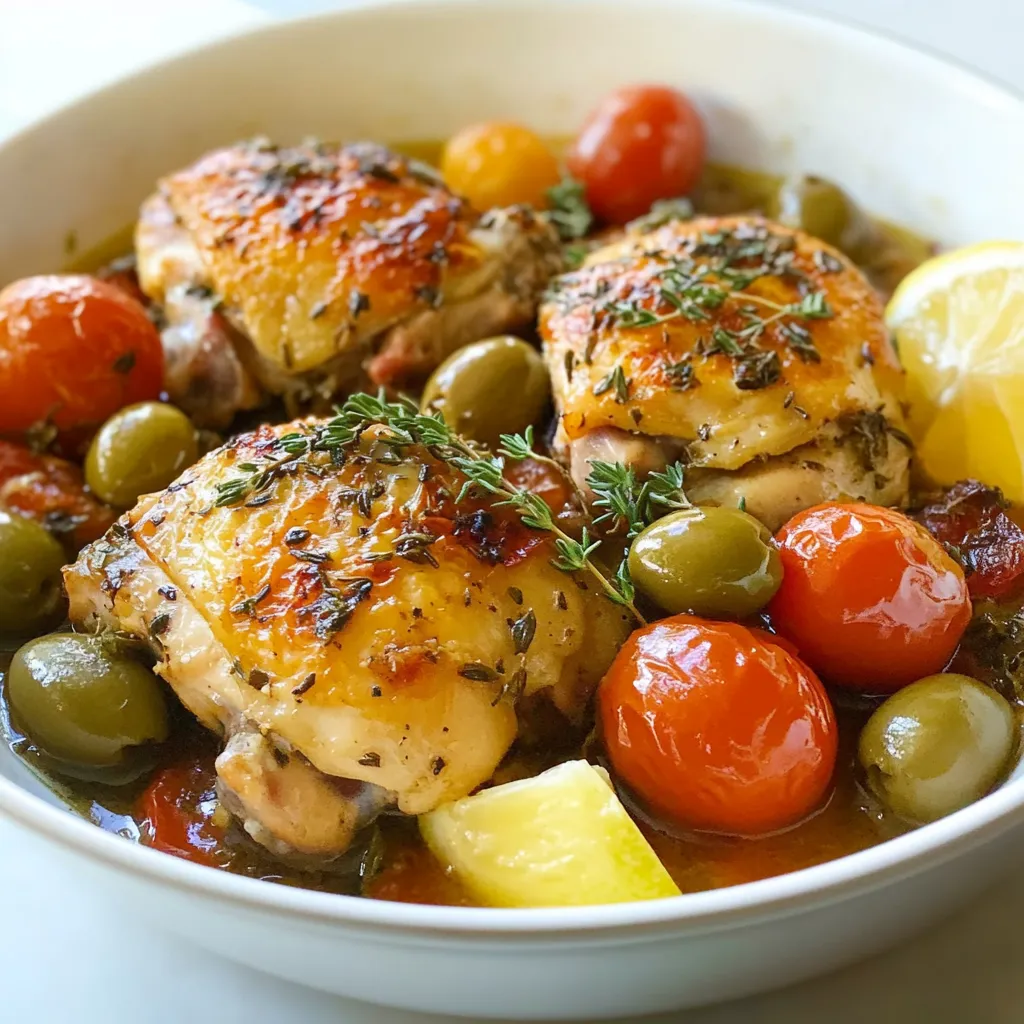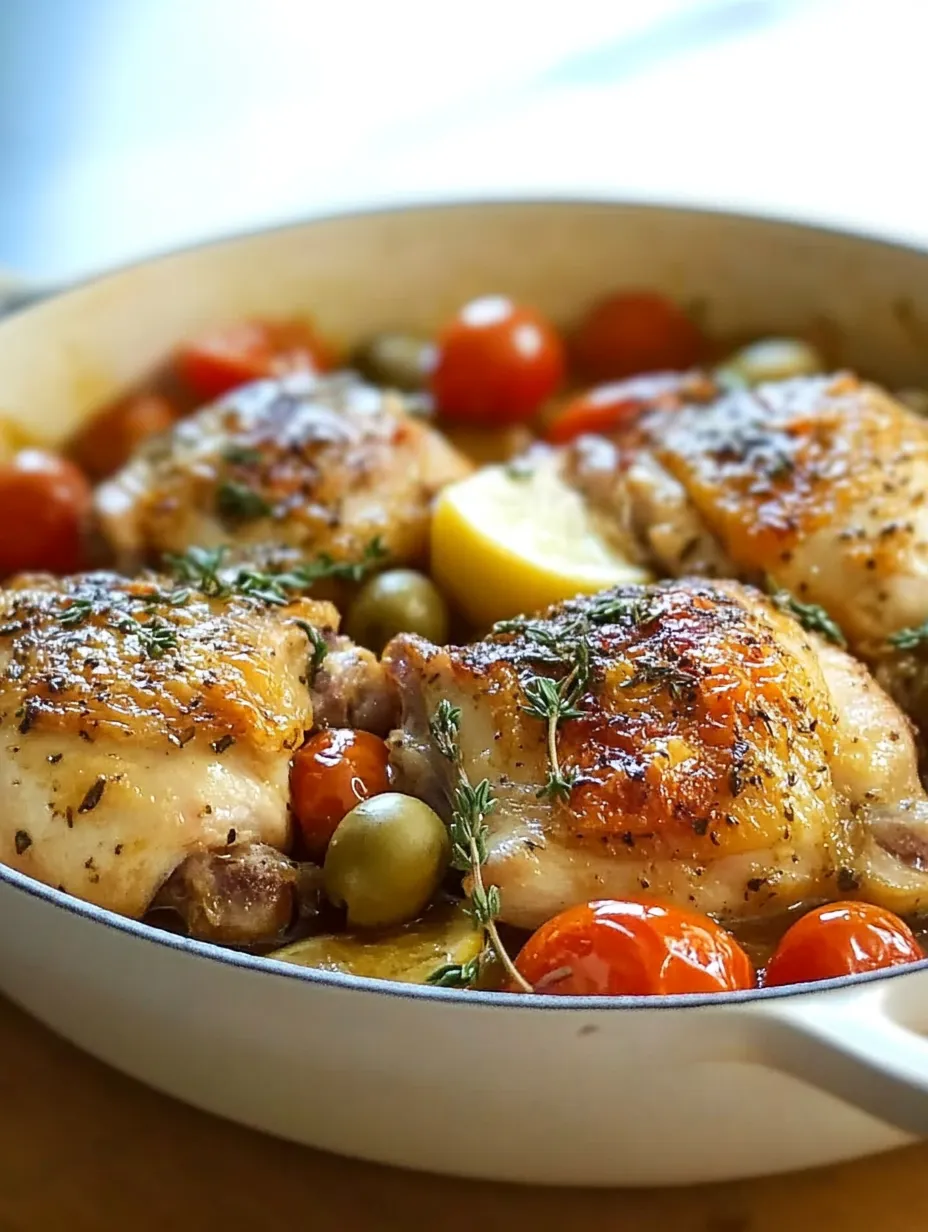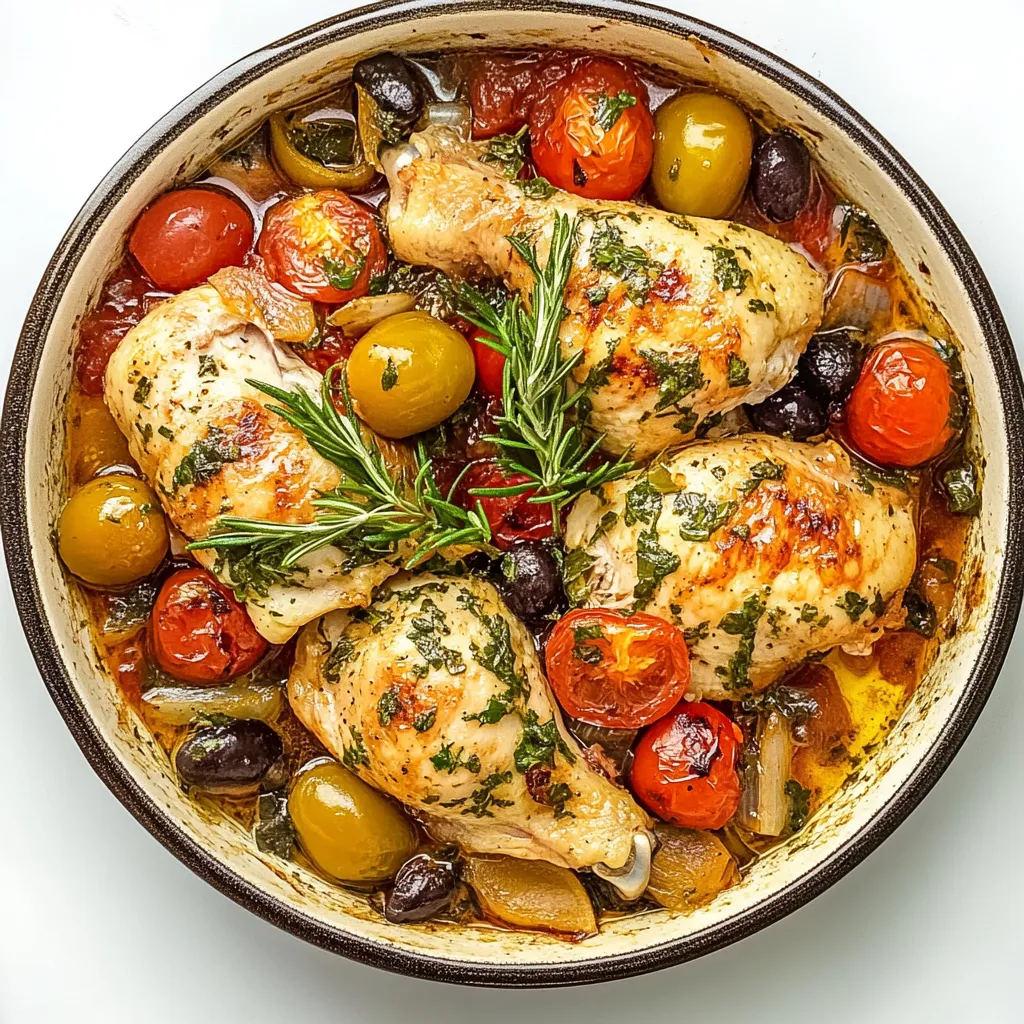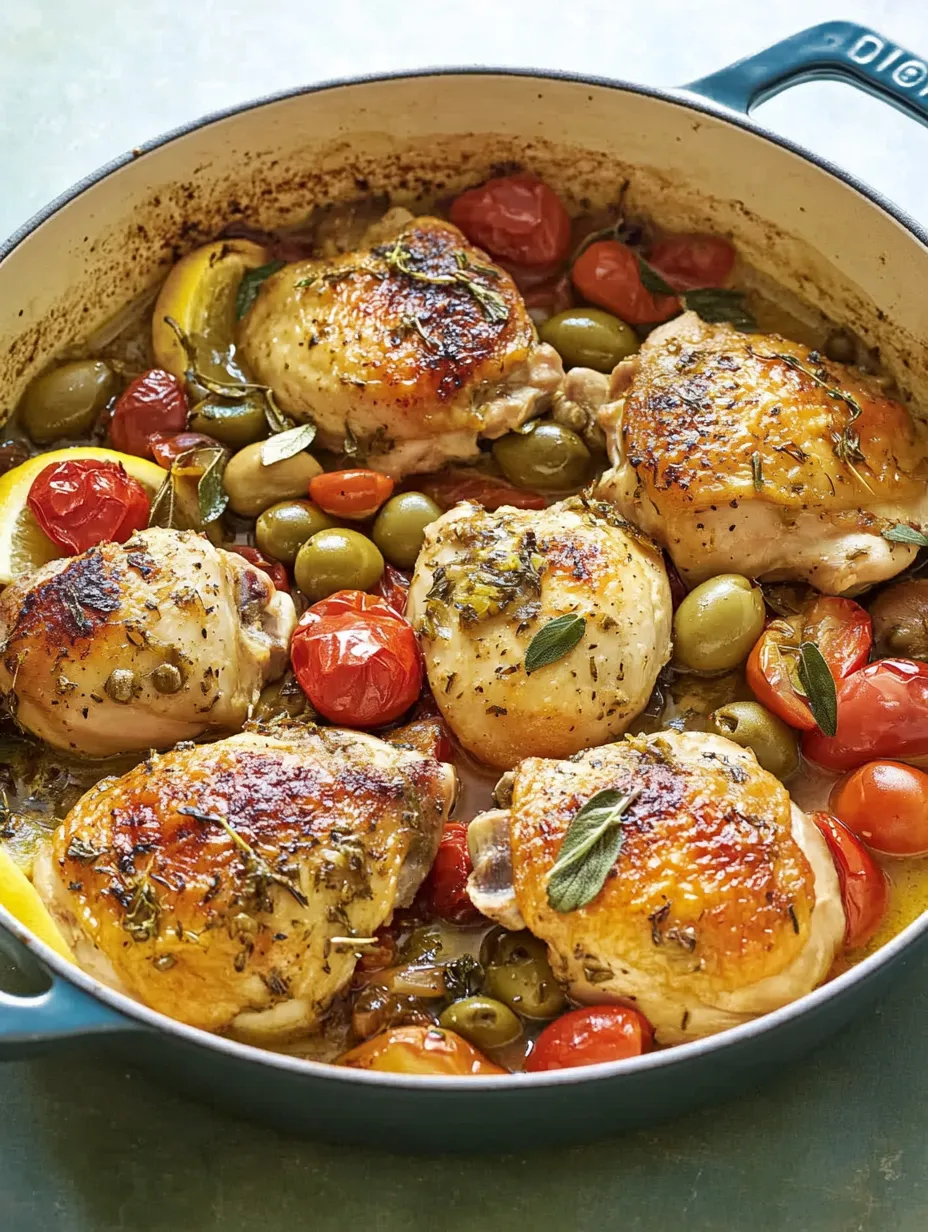 Pin
Pin
The aroma of Chicken Provençal bubbling in your kitchen transports you straight to the sun-drenched hills of southern France. Through years of perfecting this dish, I've discovered that its magic lies not just in the ingredients, but in understanding how each component contributes to creating that perfect Provençal harmony. What begins as simple chicken thighs transforms into something truly extraordinary through careful browning and gentle braising.
Last Sunday, I served this to guests who fell silent at the first bite, then immediately asked for the recipe. The secret? Taking time with each step, especially the initial browning of the chicken.
Essential Ingredients and Selection Tips
- Chicken Thighs: Look for thighs with intact skin and even sizing - they should be plump and pink
- Fresh Herbs: While dried Herbes de Provence work well, fresh thyme adds brightness that can't be replicated
- Olives: Bright green Castelvetrano provide the perfect balance of brine and buttery flavor

Building Your Foundation
Begin by properly drying your chicken thighs - this step is crucial for achieving that golden, crispy skin. Season them generously with salt and pepper, remembering that this initial seasoning forms the foundation of your dish's flavor. Let them sit at room temperature for 15-20 minutes while you prep other ingredients.

Mastering the Sear
Heat your pan patiently over medium-low heat - this slower approach ensures even heating and prevents hot spots. Add your olive oil and watch for it to shimmer slightly. Place your chicken thighs skin-side down, hearing that gentle sizzle that promises golden crispiness. Resist the urge to peek or move them for a full 8-10 minutes. This patience rewards you with perfectly crispy skin and developed flavor.
Creating the Aromatic Base
While your chicken browns, prepare your aromatics. Quarter your shallots, keeping the root end intact so they hold their shape during braising. Leave garlic cloves whole - they'll melt into sweet, tender morsels during cooking. The tomatoes should be fresh and firm; they'll slowly collapse into the sauce, adding both flavor and body.
The Art of Braising
Once your chicken is properly seared, carefully flip each piece - if they stick, they're not ready yet. Scatter your shallots, garlic, and tomatoes around the chicken, not on top. Add your olives and capers strategically, distributing them evenly. The lemon wedges go in last, providing pockets of brightness throughout the dish.
Wine Selection and Addition
Choose a dry white wine you'd enjoy drinking - I prefer a crisp French white like Chablis or Sancerre. Pour it gently around, not over, the chicken to maintain that crispy skin. The wine should come about halfway up the sides of the chicken, creating the perfect braising environment.
Serving and Presentation
Bring the entire pan to the table - the rustic presentation adds to the dish's charm. The colors tell the story: golden chicken skin, bright tomatoes, purple-tinged shallots, and vibrant herbs create a feast for the eyes. Serve with crusty baguette slices arranged around the pan's edge, ready to soak up the precious sauce.
Cultural Context and History
Chicken Provençal embodies the spirit of southern French cooking. Born in the sun-drenched region of Provence, this dish reflects the area's abundant olive groves, herb-covered hillsides, and Mediterranean influences. Traditional family recipes vary from village to village, each adding their own touch while maintaining the essential character of the dish.
Wine Pairing and Service
While we cook with white wine, serving suggestions extend beyond it. A robust rosé from Provence makes a natural pairing, as does a light red like Côtes du Rhône. The wine should complement the dish's herbal notes without overwhelming its subtle flavors.
Seasonal Adaptations
- Summer: Use ripe local tomatoes and fresh herbs
- Fall: Add mushrooms for earthiness
- Winter: Increase garlic and herbs for warmth
- Spring: Include tender new potatoes as a side
Kitchen Equipment Wisdom
Success starts with the right cooking vessel. A heavy-bottomed, oven-safe skillet or Dutch oven provides even heat distribution crucial for proper searing. Cast iron works beautifully, developing character with each use, while enameled Dutch ovens offer excellent heat retention and easy cleanup. The pan should be large enough to hold all ingredients without crowding - overcrowding leads to steaming rather than proper braising.
Leftovers and Reheating

If you're fortunate enough to have leftovers, they often taste even better the next day. Store the chicken and sauce separately from any accompanying sides. When reheating, place the chicken skin-side up in a covered dish with a splash of white wine or chicken broth. Heat gently in a 325°F oven until just warmed through - about 15-20 minutes.
Weekly Meal Planning
This dish fits beautifully into weekly meal planning. Prep ingredients the day before, storing them separately. The actual cooking time is largely hands-off, allowing you to prepare sides or tend to other tasks while the oven works its magic. Double the recipe when possible - leftovers transform into fantastic sandwiches or salad toppers.
Alternative Serving Suggestions
- Creamy Polenta: Perfect for catching every drop of sauce
- Roasted Fingerling Potatoes: Seasoned with herbs
- Simple Butter Lettuce Salad: With a light vinaigrette
- Steamed Green Beans: Tossed with garlic and almonds
Extended Final Thoughts
The essence of Chicken Provençal lies in its simplicity and respect for ingredients. Through countless preparations in my kitchen, I've learned that success comes from understanding how each component develops flavor. The slow transformation of simple ingredients into a cohesive, aromatic dish represents the heart of French country cooking.
Recipe FAQs
- → Can I use chicken breasts instead?
- Thighs are preferred as they stay more tender during braising, but breasts can work with reduced cooking time.
- → What can I substitute for white wine?
- Use chicken broth with a splash of white wine vinegar for similar flavor.
- → What are Herbes de Provence?
- A French herb blend typically containing thyme, basil, rosemary, tarragon, savory, marjoram, oregano, and lavender.
- → Can I make this ahead?
- Yes, flavors improve overnight. Reheat gently in oven or stovetop.
- → What pan should I use?
- Any large (12-inch+) oven-safe skillet or Dutch oven works well.
